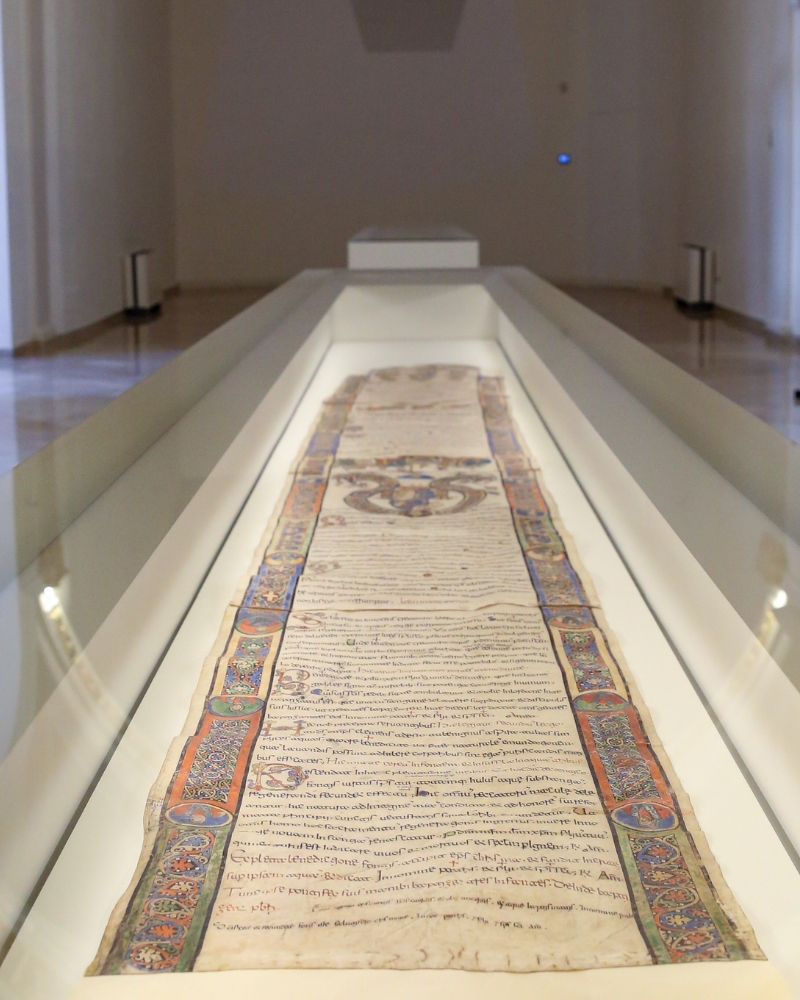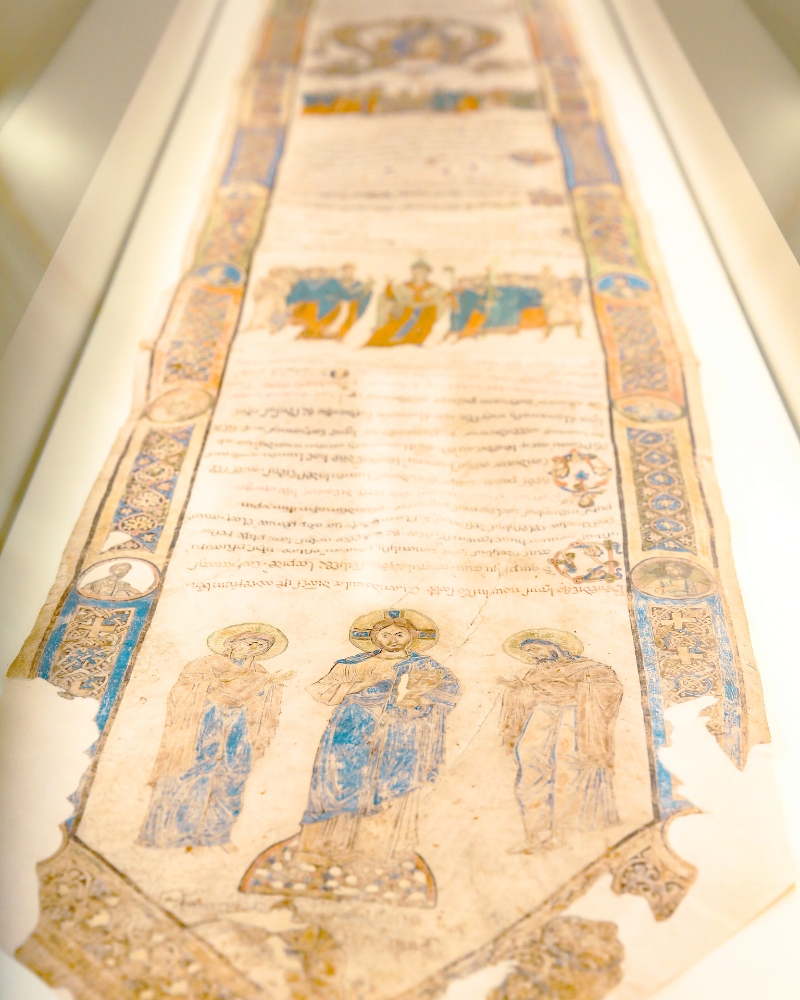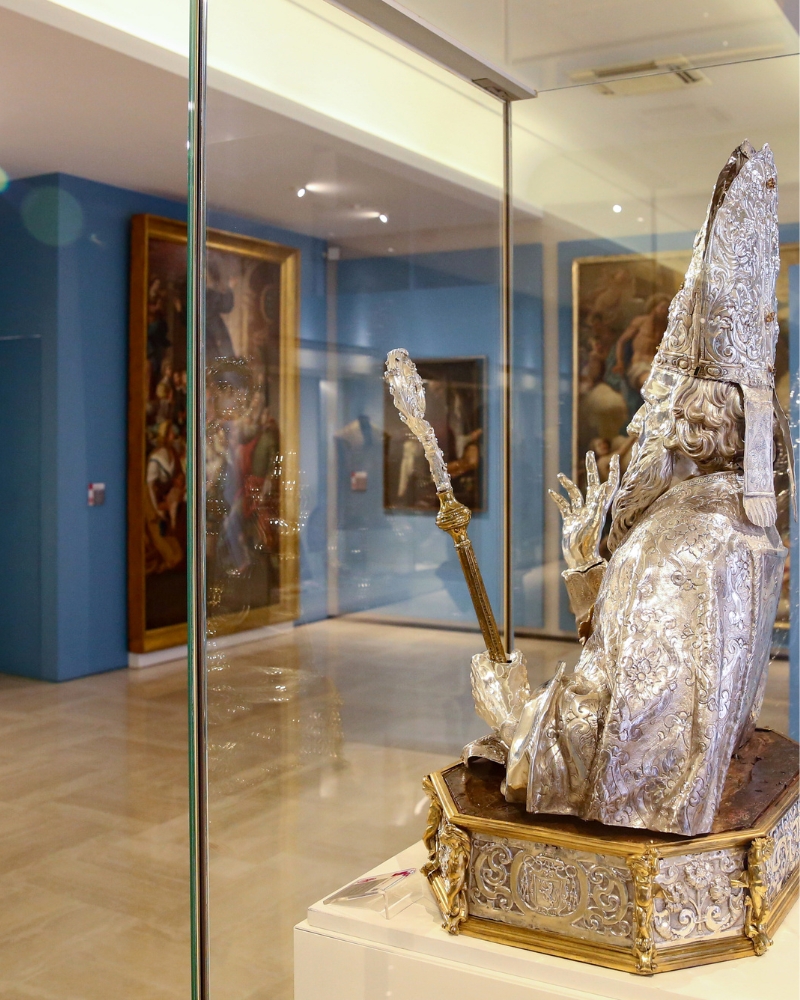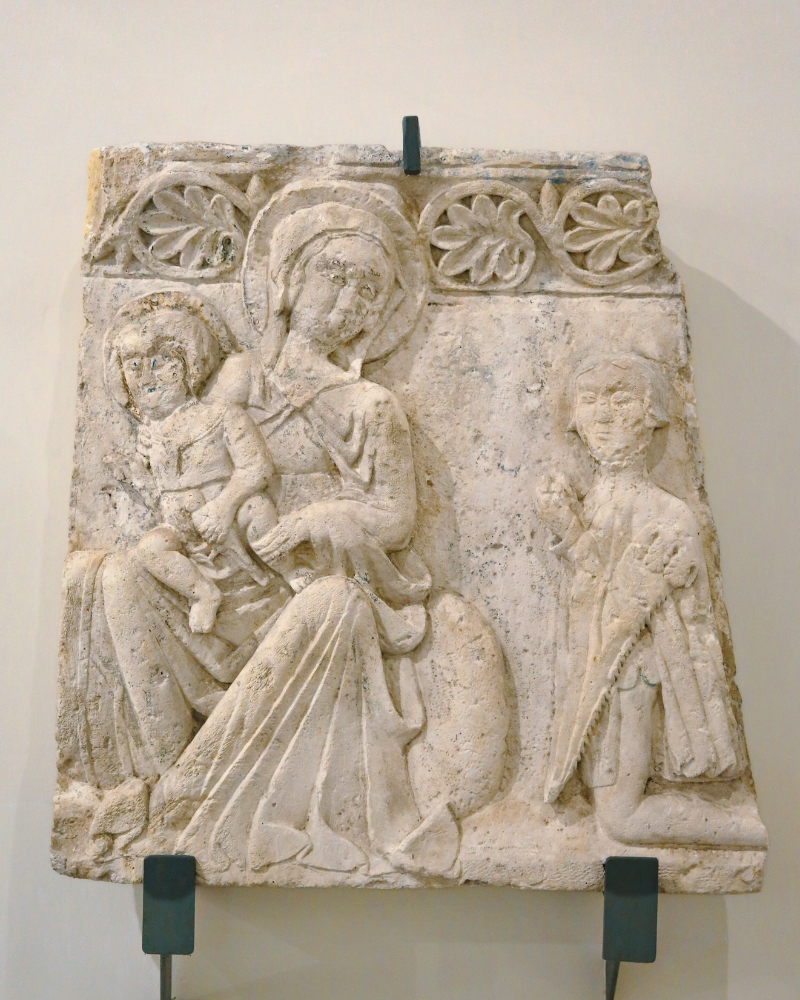Museum of the Exultet
Seeing the sacred mediaeval scrolls of the Easter liturgy at close hand.
The museum preserves the priceless Exultet, and chronicles the architectural and decorative evolution of the Cathedral of Bari with a fine collection of liturgical objects and painted works.
The Diocesan Museum
On the second floor of the Palazzo Arcivescovile [Archiepiscopal Palace], the Museo Diocesano [Diocesan Museum], also known as the Exultet Museum, collects and preserves artefacts from the churches in Bari Vecchia and the Diocese, otherwise abandoned in storage or dispersed: paintings, sculptures, liturgical objects and sacred vestments, but above all the Exultet and the Benedizionale (the blessing of fire and water according to the Beneventan rite), the museum’s real treasure.
The itinerary unfolds chronologically from the early Christian age to the Middle Ages, from the period of the Council of Trent to the Baroque, and on to the 19th and 20th centuries.

Hall of liturgical vestments

Exultet, detail of the Benediziale
The Exultet and Benedizionale exhibit rooms
Pivotal to the entire collection are the most precious Exultet and Benedizionale, very long scrolls of parchment (4-5 metres) used during the Easter liturgy between the 10th and 13th centuries and characterised by portions of text, musical notation and depictions of sacred scenes.
Made in Bari in the scriptorium or monastery of San Benedetto [St Benedict] or the cathedral, in script called Beneventana Bari Type, they were unrolled on the ambo and, while the deacon intoned the chant, the faithful could meanwhile observe the accompanying images shown in reverse to the scripture.
The Pinacoteca
The picture gallery or Pinacoteca contains valuable works from the Cathedral and the multitude of churches in the Old City. The 14th-century icon of the Madonna of the Alemanni, the Madonna and Child by the painter who has come down to us only as Z.T., the altarpiece of the Risen Christ by Andrea Bordone, and the Adoration of the Magi by Corrado Giaquinto are particularly noteworthy.
Equally interesting is the Russian sacred iconography that shares with Bari a devotion to the cult of Nicolas.
Other important works owned by the Diocesan Museum are now on exhibit in the Pinacoteca Provinciale “Corrado Giaquinto” in Bari. These include paintings by the great Venetian masters Tintoretto, Veronese and Paris Bordon, bearing witness to the extensive trade relations that connected Venice to Apulia.

The Pinacoteca

Sculpture of a Madonna and Child
The rooms of the sculptural artefacts and vestments
The museum tour opens and closes with the two rooms dedicated to sculptural finds and liturgical vestments.
The first provides the opportunity to reconstruct the architectural and decorative evolution of the Cathedral of Bari, a building with a predominantly Romanesque layout that reveals signs of later interventions. The precious 13th-century sculptures are a great attraction for visitors: the Tree of Life by Peregrino da Salerno and the capitals of the ciborium by Anseremo da Trani.
The second room has an extensive exhibit of vestments, stoles, maniples and mitres from the 15th to the 20th century, some of the finest Italian and French workmanship and opulent embroidery to spark the curiosity of visitors.
ArtEcclesiae is carried out by Artwork with the Archdiocese of Bari-Bitonto


ARTECCLESIÆ BARI-BITONTO
Piazza Odegitria
70122 Bari
Tel. 329-2697374
Email: info@artecclesiae.it
